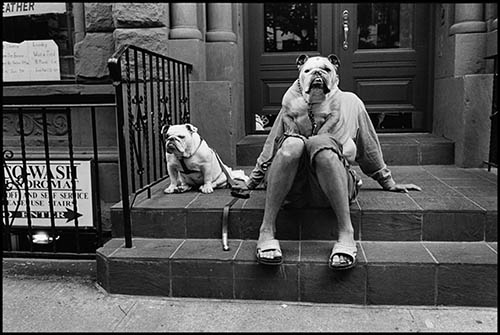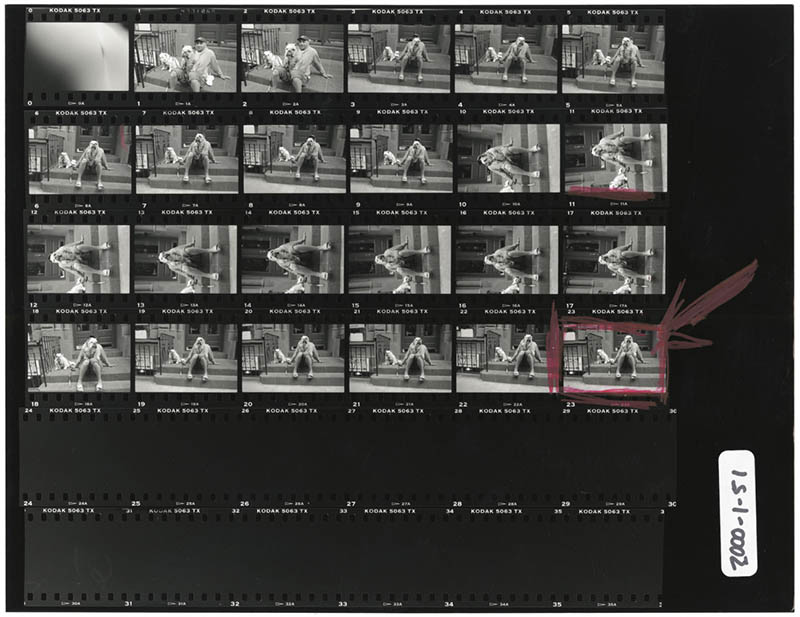The Benefit to Being Conspicuous While Photographing
![]()
A photograph can reveal some deep human truths, but even the most intricate images may not divulge in a self-referential way. A deeply intimate scene could have been made from very impersonal practices, and similarly one could use a respectful, peaceful photographic approach to produce something obscene.
![]()
If you have a background in studio photography you may look at an image and critique what you would have done differently with positioned lights, colored gels, set dressing, and so on. That is the context you may bring and project onto a photograph that wasn’t made with any kind of studio methods of the sort. The way a nature-oriented photographer experiences a studio photograph may be similarly “contaminated”, just as with an academic’s reading of abstract artistry or a solely-digital photographer’s reading of a lacquered tin type. We simply can’t always derive method from form.
![]()
For street photography, and a few other genres, I think there is an expectation that the photographer behaves almost like a floating camera, covert and stealthy. In street photography especially I think that there is a current expectation that being inconspicuous makes for purity of outcome, but I think that this is a modern interpretation of observing images and hearing marketing talk, spin, and myth put forward by photographers looking to imbue their work with something above and beyond the simplicity of using a camera at the right moment.
I don’t think that putting effort into stealth while working is conducive to good, humanistic images – in fact, the opposite. I think that putting up barriers between you and others is a symptom of fear rather than any kind of artistic or ethical purity. If you are afraid to be seen or caught with a camera maybe spend some time with that fear and figure out its source. Perhaps it comes from social anxiety, which can be worked with, or perhaps you’re worried about how people might perceive your actions, which is a problem that can go in a few directions.

If you were to ask a stealth-oriented practitioner how to achieve a photograph like the above one by Elliot Erwitt, they may tell you to set your camera with a deep depth of field, walk by, shoot from the hip, and make a burst of images to make sure one is the correct alignment.
However, the contact sheet from this iconic photograph tells a different story.

Not only was there clearly an interaction between Erwitt and his subject, but you can actually see his thought process in motion across the many shot frames – the final resulting image being at the end of this process. You cannot go through this thought process and actively collaborate with someone in the moment if being sneaky is your priority.
Closing yourself off from being able to actively work with people in the world I think leads to detached, distant photography, lacking in intimacy. Notice that the above example does not need to be staged or posed, which are practices that I am quite firmly against in candid situations. However, a smile, a laugh, and friendly interaction with someone else are one of the most valuable experiences to have with a stranger and make for some really special photographs.
![]()
It’s easy to depersonalize while photographing strangers, reducing them to fashion, silhouettes, and shadows. The sight stress from being in public and feeling like you need to hide away or that you don’t belong will make the eventual audience to your images feel like what they are seeing is a somewhat forbidden viewpoint, made as an outsider looking in. Put openness into your approach, and openness is what your audience will eventually feel. It will pay off in the images.
![]()
An open, conspicuous approach will also lead you into personal situations that you otherwise may not have engaged with. Meet and speak to people, hear what they have to say, offer some actual depth to your images. Put your camera to your eye and smile while doing so, instead of holding it under folded arms, closed body language, and a closed mind. Body language and attitude are the only things that need to change to open up all kinds of possibilities that would otherwise be closed to you, without actually closing those previous possibilities; there are very few images that you will not be able to make with such an approach, even if you want to produce an impersonal result.
If you are especially stuck in a rut of hiding away from the world then this approach will also contribute to a mindset shift. Approach life with honesty; don’t pretend that you aren’t a part of it, that you aren’t there. If this is actually your approach when photographing “stealthily” I think you may be surprised just how ineffective you are being, and how detrimental it is to your actual photographs. People are perceptive, they can see when someone is being shifty, trying to hide, and they will question your intentions if they see you trying to hide what you are doing with a camera. You will not set people at ease, you will make them uneasy if you don’t seem like you belong. Instead belong, and belong with a camera to your eye. Yes, it may be harder work, but it is truly worthwhile.
![]()
You will also be surprised, once you have that ability to belong in a space, how little it ”interferes” with the candid nature of the human condition. Once “established” in a situation unless you directly direct someone, or behave in a way that people will respond to, you will be surprised just how little people care or even notice you working.
When you stand in a crowd there is no way to not be part of it. You are the crowd, just as when you sit in traffic, you have become the traffic. No separation, no hiding away. Accept it, don’t stress, and focus on what you are there to do, your purpose to make images from that situation.
P.S. You can find my recent collaborative publications here, which include a Foundation Stone laying ceremony in a Tamil Murugan Community, and an account of Summer Solstice at Stonehenge.
About the author: Simon King is a London-based photographer and photojournalist, currently working on a number of long-term documentary and street photography projects. The opinions expressed in this article are solely those of the author. You can follow his work through his documentary collective, The New Exit Photography Group, and on Instagram.